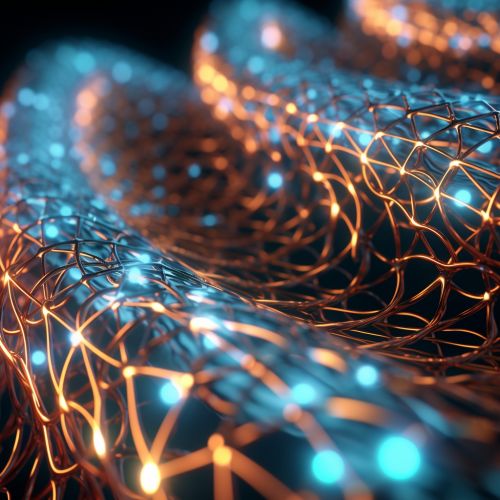Nanomagnets
Introduction
Nanomagnets are a class of nanoscale materials with unique magnetic properties. They are usually composed of magnetic elements such as iron, nickel, or cobalt, and have dimensions in the nanometer range (1-100 nm). These materials are of significant interest in the field of nanotechnology due to their potential applications in data storage, medical imaging, and targeted drug delivery.


Physical Properties
The physical properties of nanomagnets differ significantly from their bulk counterparts due to quantum effects. These effects become significant at the nanoscale, leading to unique magnetic behaviors.
Superparamagnetism
One of the most notable properties of nanomagnets is superparamagnetism. This phenomenon occurs when the thermal energy is comparable to the magnetic anisotropy energy of the system. It results in a rapid reversal of the magnetization direction, making the material appear paramagnetic. However, unlike paramagnetic materials, superparamagnetic materials exhibit high magnetic susceptibility and zero hysteresis.
Giant Magnetoresistance (GMR)
Nanomagnets also exhibit a phenomenon known as Giant Magnetoresistance (GMR). This property, which won the 2007 Nobel Prize in Physics, is the significant change in electrical resistance depending on the magnetic field. GMR has revolutionized the field of data storage by enabling the development of high-density hard disk drives.
Synthesis Methods
Several methods can be used to synthesize nanomagnets, including chemical synthesis, physical vapor deposition, and lithographic techniques.
Chemical Synthesis
Chemical synthesis methods, such as co-precipitation and thermal decomposition, are often used due to their simplicity and low cost. These methods involve the reaction of precursor chemicals in a solution, followed by separation and purification of the resulting nanomagnets.
Physical Vapor Deposition
Physical vapor deposition (PVD) methods, such as sputtering and evaporation, involve the deposition of atoms or molecules from a vapor phase onto a substrate. These methods are widely used in the semiconductor industry and can produce high-quality nanomagnets with controlled size and shape.
Lithographic Techniques
Lithographic techniques, such as electron beam lithography and nanoimprint lithography, involve the patterning of a resist material followed by etching or deposition processes. These methods can produce nanomagnets with precise control over size, shape, and spatial arrangement.
Applications
Nanomagnets have a wide range of applications in various fields, including data storage, medicine, and environmental science.
Data Storage
In the field of data storage, nanomagnets are used in hard disk drives and magnetic random access memory (MRAM). The use of nanomagnets allows for higher storage densities and faster read/write speeds compared to traditional magnetic materials.
Medicine
In medicine, nanomagnets are used in magnetic resonance imaging (MRI) and targeted drug delivery. In MRI, nanomagnets enhance the contrast of images, allowing for more accurate diagnosis. In targeted drug delivery, nanomagnets are used to guide drugs to specific locations in the body, reducing side effects and improving treatment efficacy.
Environmental Science
In environmental science, nanomagnets are used in water treatment and pollution control. They can be used to remove heavy metals and other pollutants from water, and can also be used to monitor and control air pollution.
Future Directions
The field of nanomagnets is still evolving, with many potential applications yet to be fully realized. Future research will likely focus on improving the synthesis methods to produce nanomagnets with more controlled properties, and on developing new applications in fields such as quantum computing and energy storage.
